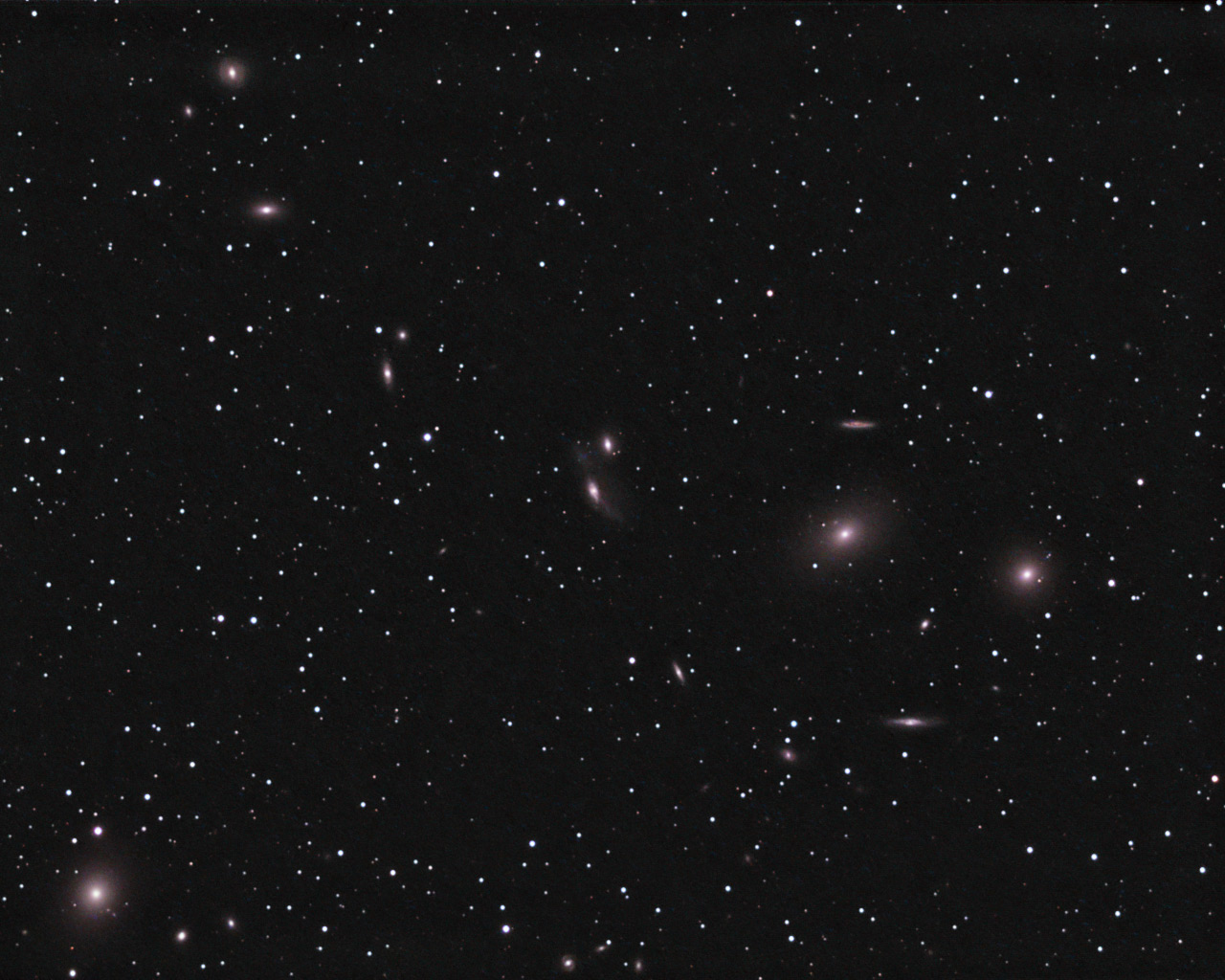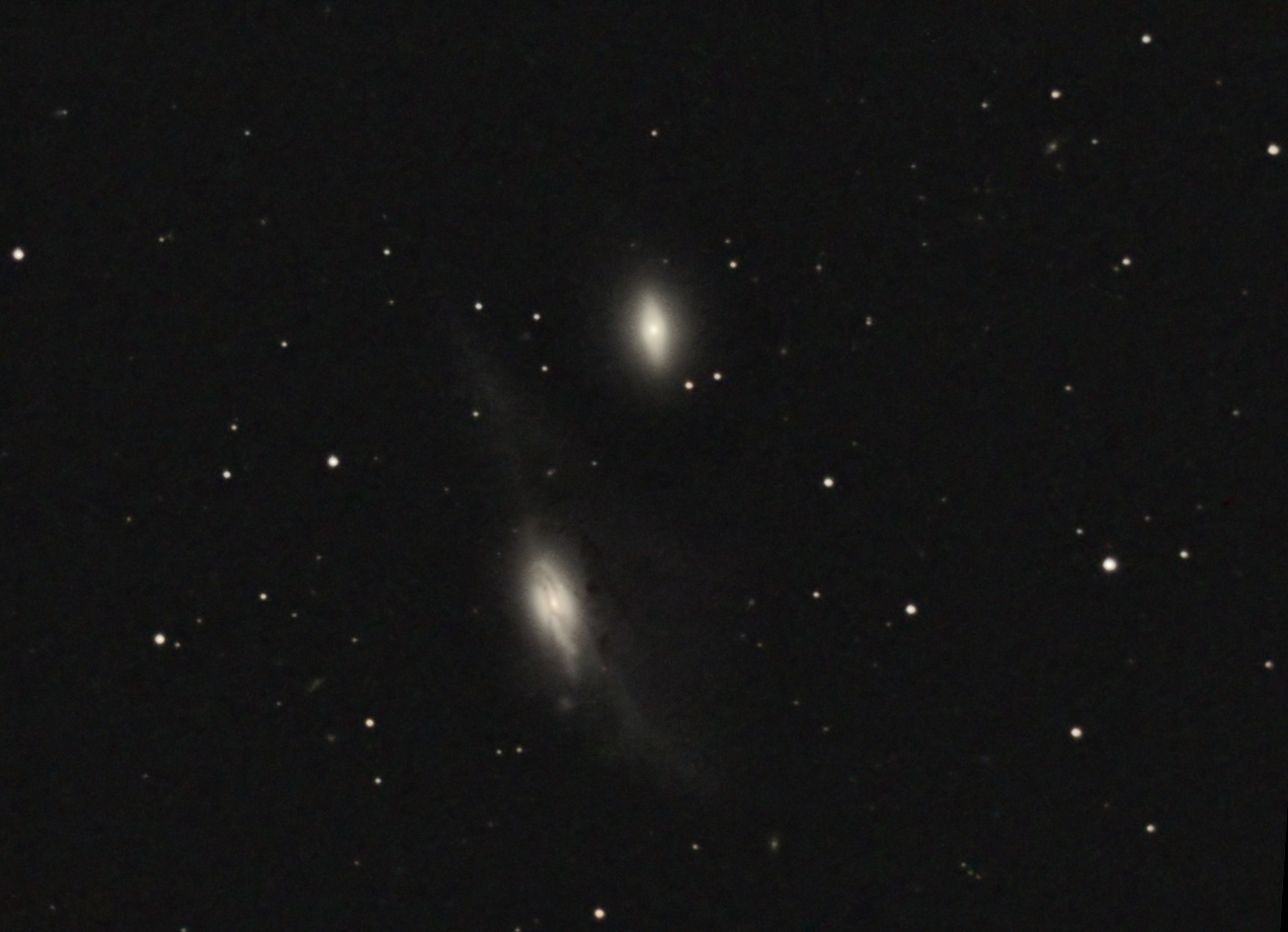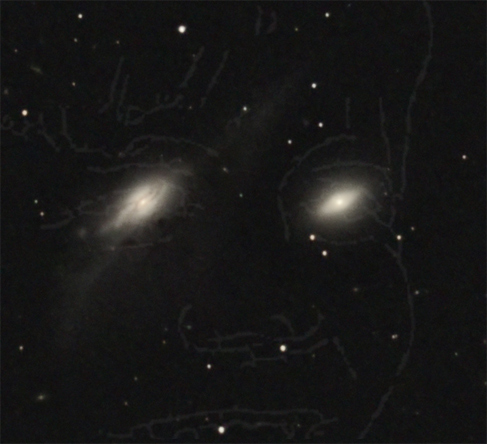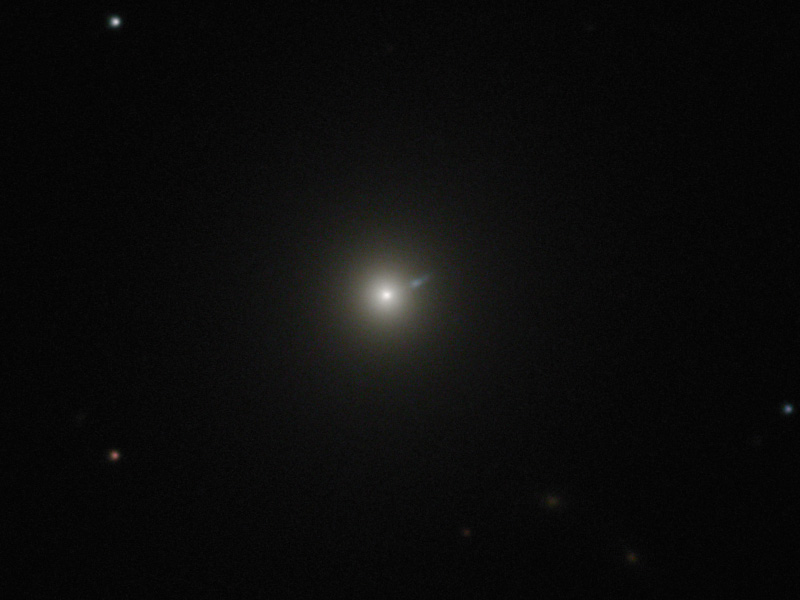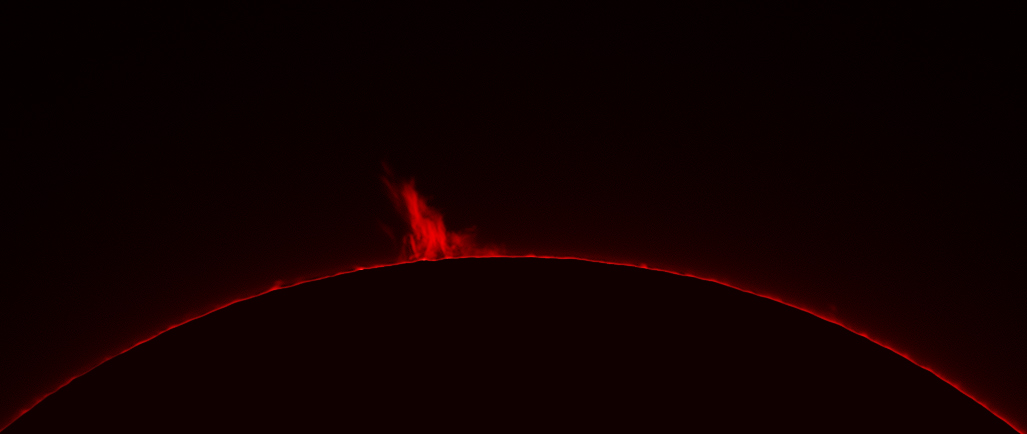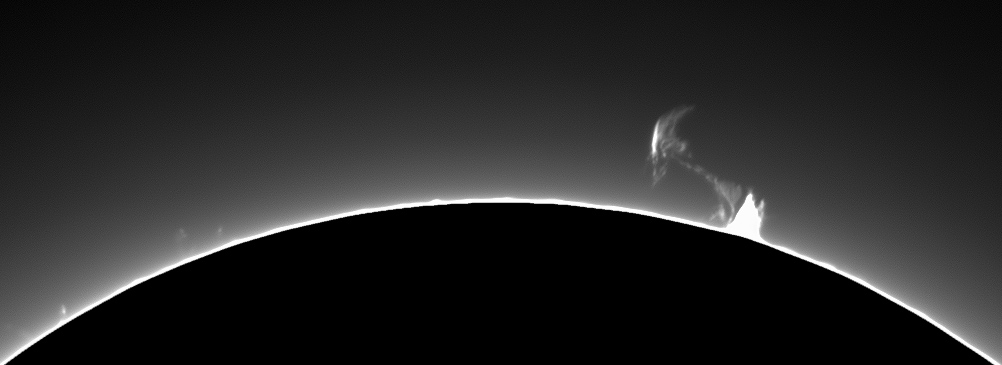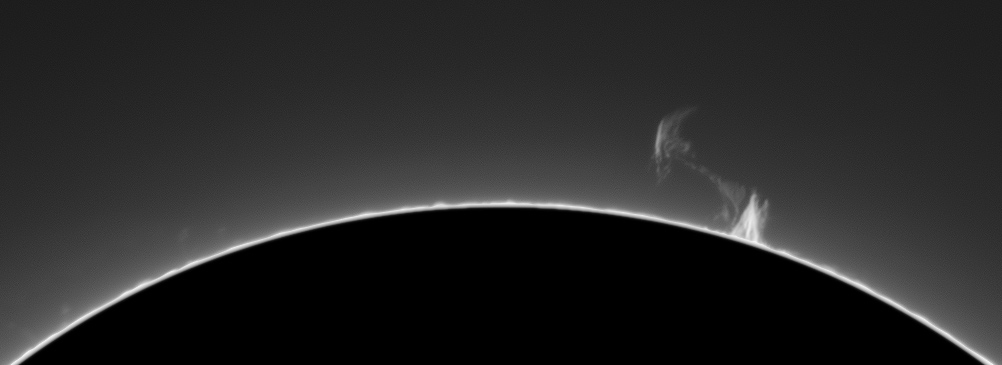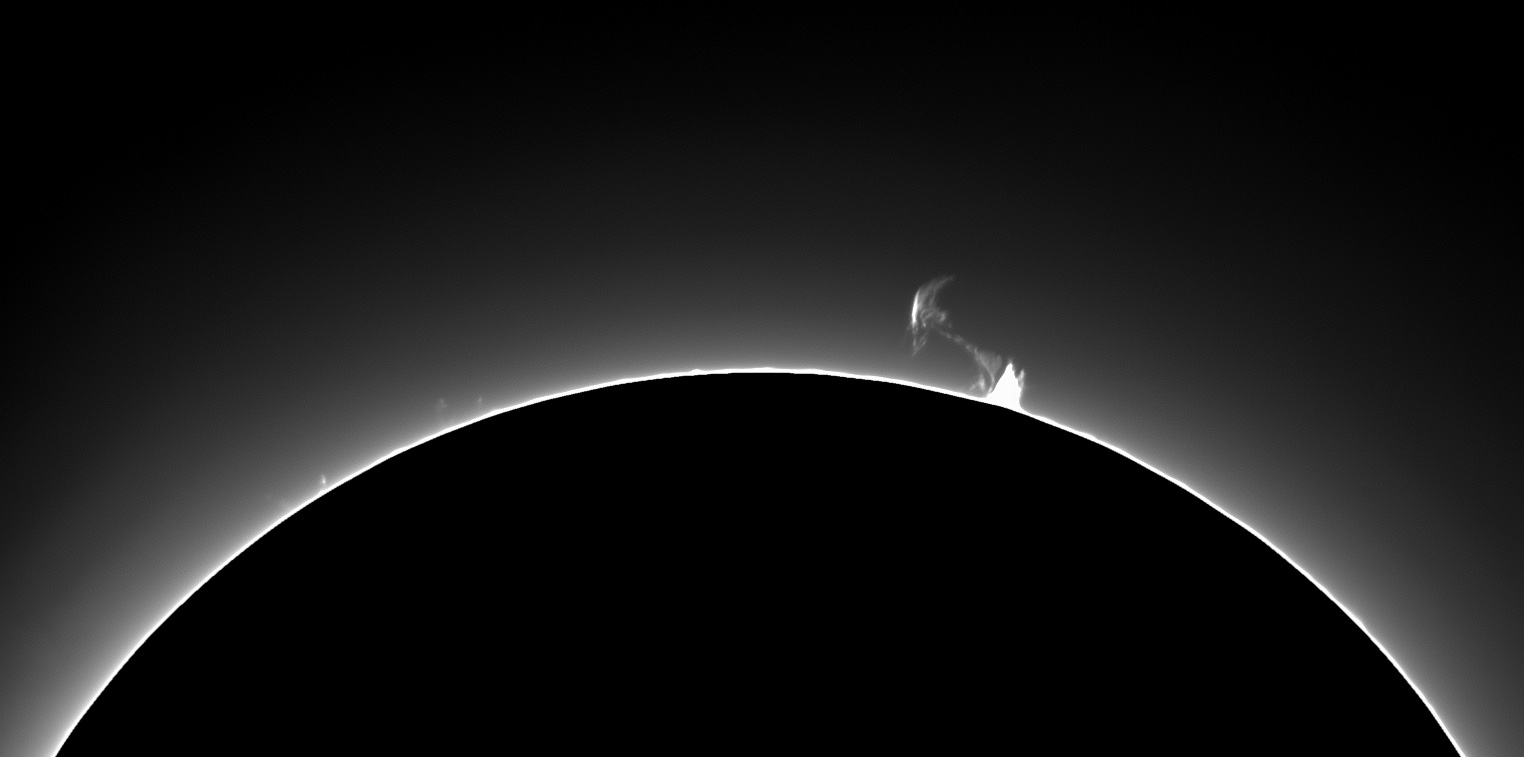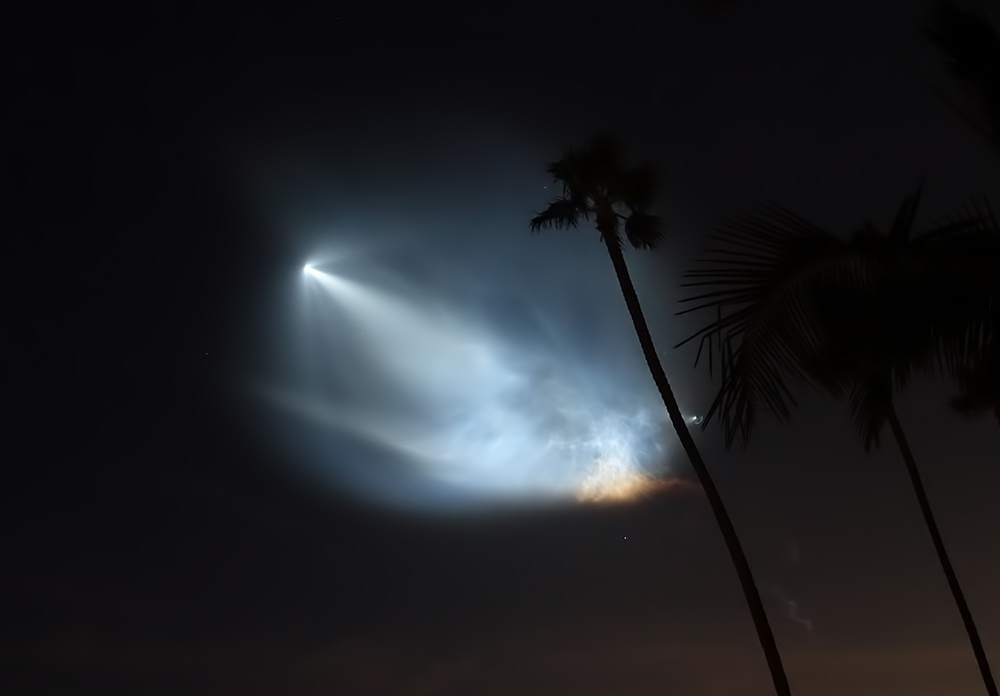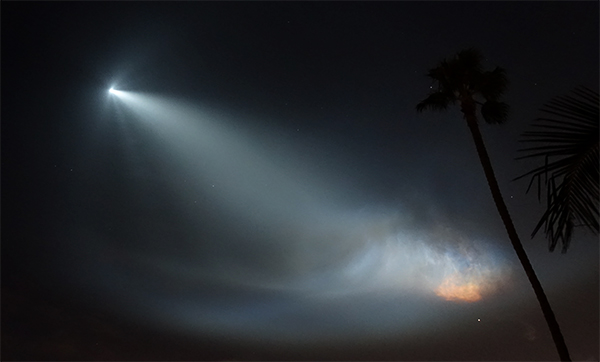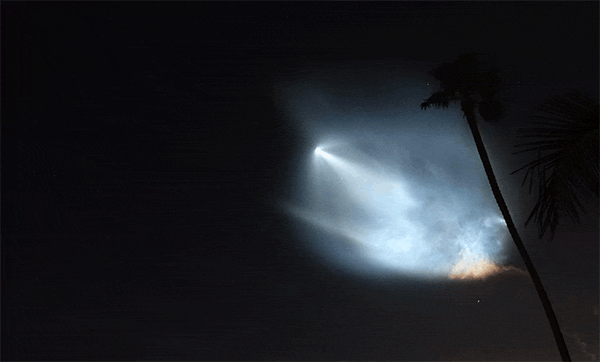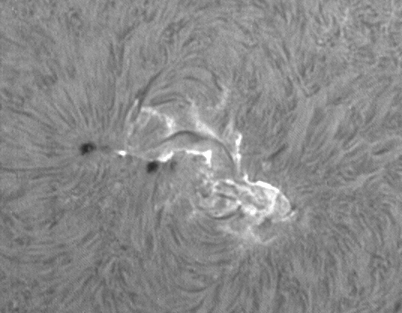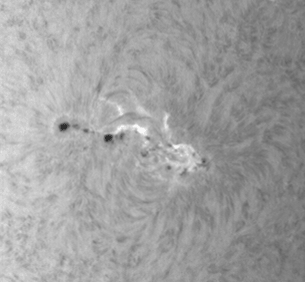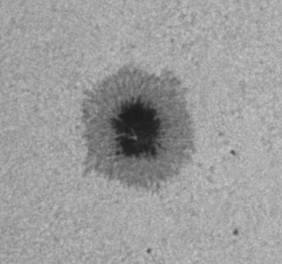 |
| AR 2738 4/14/19 WL |
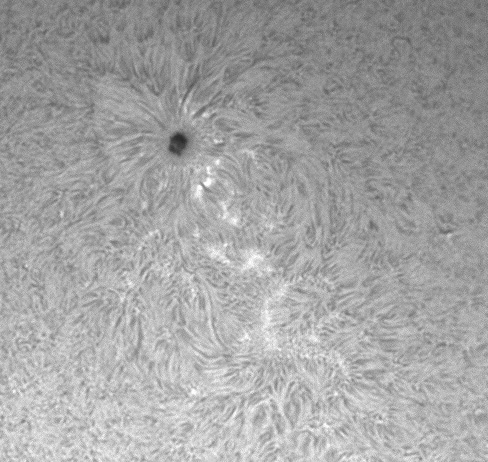 |
| AR 2738 4/14/19 Ha |
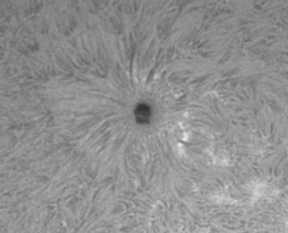 |
| AR 2738 4/14/19 Ha and WL |
The following weekend as the spot rotated off the face to the edge, i watched very dynamic activity on the limb, including a prominence lifting off and a very bright ball of plasma:
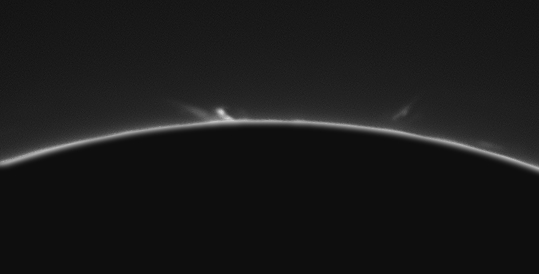 |
| Ha 4/20/19 |
but there was a nice prominence on the opposite side:
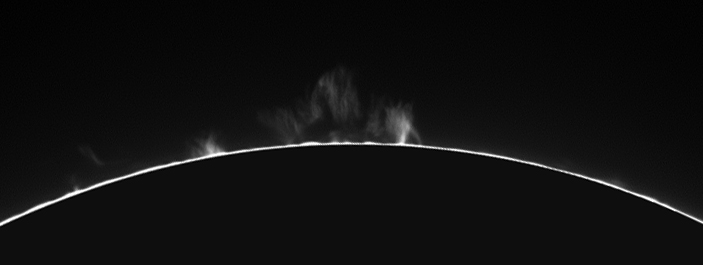 |
| Ha 4/20/19 |
Full disk view through light incoming clouds:
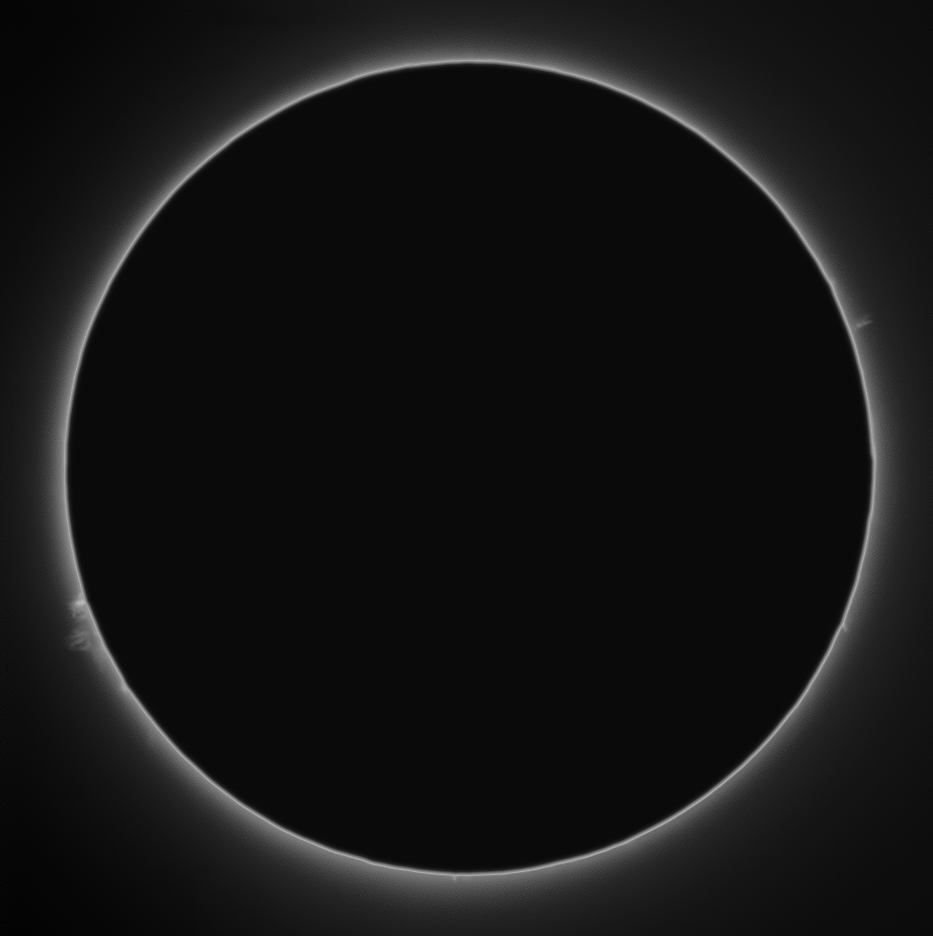 |
| Sun Ha 4/20/19 through light clouds causing glare |
Image details:
C11 edge on ASA DDM 80, baader film, baader continuum filter, IR/UV block filter
first light with C11 soloar filter, love the cooling fans, unfortunately seeing was poor
Lunt 60 PT on manual alt-azm mount
Eastbluff, CA
4/14/19 poor seeing (image reduced to 50%)
C11
19:45 UTC
ASI 290 MM
FPS (avg.)=147
Shutter=0.918ms
Gain=351 (58%)
Lunt double stacked
20:56 UTC
ASI 290 MM
FPS (avg.)=103
Shutter=9.699ms
Gain=67 (11%)
4/20/19
first prom
ASI 290 MM
22:55 UTC
second 22:58 UTC
20 second video
111 fps
Shutter=1.0 ms
gain 351
best 12%
full disk with light clouds
ASI 174 MM
23:09 UTC
45 fps
Shutter=10.00ms
Gain=225 (56%)
